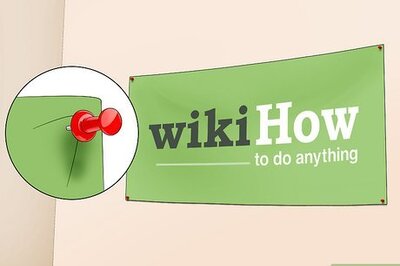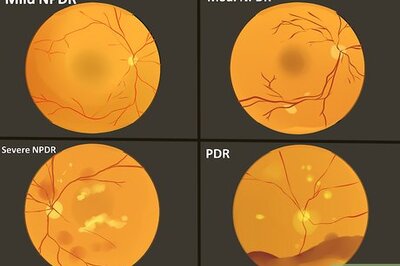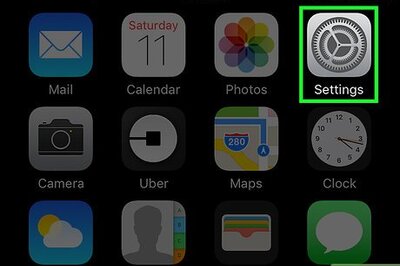
views
Like most mental health difficulties, Attention-Deficit/Hyperactivity Disorder, or ADHD, is complex. It is a neuro-biological condition that affects the mind. Along with treatment, the social environment can make a big difference. When people without ADHD support people with it, a person with ADHD can thrive in their own way.
ADHD has a big impact on the individual, as well as the social and economic environment. Following through with treatment can help improve attention span, increase self-confidence, and build better relationships. Timely treatment improves school, work and social interactions by addressing core symptoms.
Some of these are impulse control, distractedness, hyperactivity, emotional dysregulation (where emotional reactions fall outside the typical response level), and executive dysfunction (where a person’s ability to manage their thoughts and actions are disrupted). Treatment also reduces the risk for smoking, substance abuse, depression, suicidality, sexually transmitted infections, accidental injuries and joblessness.
Because ADHD is unique for each person, treatment needs to be individualised for best results, regardless of age or gender. A ‘multimodal’ approach works best, meaning that more than one treatment is needed at the same time. Although medication is the first approach, for some patients, psychosocial treatment and support are important for achieving quality of life.
The biological basis to ADHD includes chemical transmitters in the brain called catecholamines, which include dopamine and norepinephrine. Dopamine is important for reward and behavioural regulation pathways, and norepinephrine for alertness, arousal and attention.
People with ADHD have lower levels of dopamine and norepinephrine in the prefrontal cortex, which is located at the front of the brain behind the forehead). Medication for ADHD helps improve transmission of dopamine and norepinephrine.
The first step in getting ADHD treatment is to see your doctor for a diagnosis. Once a person is diagnosed with ADHD, medical options are explored to find the best fit. Effective medication include amphetamines and methylphenidate. These medications, called psychostimulants, block the reuptake of dopamine and norepinephrine in the region between brain cells (synaptic space or synapse). They do this by blocking transporters that move dopamine and norepinephrine within the synapse.
There are long-acting stimulants (effective up to 16 hours) and short-acting stimulants, which begin working in about 30 minutes and last up to six hours. There are also non-stimulant options, which work in the norepinephrine synapses of the brain.
To understand how all of this works, imagine a busy street with no traffic lights or stop signs. Medications act as traffic controllers, organising the internal cacophony where someone with ADHD becomes overwhelmed from trying to process life all at once. A medically assisted balance of transmitters helps tune out distractions so the mind can focus on the task at hand, be it safely crossing the street, maintaining focus in a conversation, or completing homework or household chores.
Since ADHD is different for everyone, the dose and medication need to be tailored to have the optimum effect with the least side effects. The types of medication the doctor will prescribe depends on what is approved and available in the country where you live.
Treatment is most successful when the patient is supported by their family and social environment. Psychosocial support at home, in the social milieu, at school and at work, are important for a person with ADHD. After all, pills don’t teach skills! Support can be garnered through multiple routes, from parental behavioural interventions for children and youth, educating the self and others, therapy, exercise, and meditation.
Children with ADHD-related challenges, such as an explosive temper, or an inability to complete tasks, need parental support, especially in regions where the resources available for families are limited. Positive parenting strategies, where, for example, you connect with your child before you correct their behaviour, can help. This can be done by repeating their expressions of frustration, like – ‘I hear you are angry, and that’s okay. Can you tell me why you are upset?’ This has a calming effect over demanding that they calm down and focus. They do not have the skills to quiet their minds and concentrate, and need help to do so.
Parents can also help by being mindful of their children’s activity levels. Physical exercise and spending time outdoors is beneficial for everyone, particularly for people with ADHD. Physical movement, like walking, running and jumping, creates healthy blood flow throughout the body and brain. Movement improves overall health, in addition to demanding focus in the moment allowing someone with ADHD to ‘get out of their own heads’ for a while.
Nurturing your mental health can help manage the emotional load of having ADHD. Occupational, art, and music therapy have been shown to have benefits, depending on the individual. Doing something creative – from doodling, tapping a rhythm with your fingers and gardening – can have a positive impact.
Cognitive therapy, the only validated non-drug therapy for ADHD is where an individual and a therapist develop strategies for dealing with ADHD. For some patients, meditation, which draws focus to the breath and body in that moment, can help ease anxiety and depression as well as improve memory and focus.
Speaking at a recent conference (Center for ADHD Awareness Canada, CADDAC 2022), Dr Joan Flood likened having ADHD to a brand new computer, all set up and ready to go, but “the internet connection has only one bar. This (medical treatment and social support) is our way of getting from one bar to four bars!”
A person does not need to suffer alone with ADHD. With treatment and support, the life of the individual and their social, work, and family relationships, can be full and satisfying.
The authors thank Dr Alka Subramanyam, Dr Doron Almagor, Dr Mantosh Dewan, and Dr Stephen V Faraone for providing comments about this article. Dr Alka Subramanyam is associate professor, Topiwala National Medical College and BYL Nair Hospital, Mumbai. Dr Doron Almagor is founder and director of Possibilities Clinic in Toronto, Canada. Dr Mantosh Dewan is distinguished service professor, department of psychiatry, and president, SUNY Upstate Medical University, USA. Dr Stephen V Faraone is president of the World Federation of ADHD. He is distinguished professor, department of psychiatry, and vice-chair for research, SUNY Upstate Medical University, USA (www.ADHDevidence.org)
Mel Lefebvre is communications director; Sarojini M Sengupta, PhD, is CEO of AIMH (www.aimhinc.com)
Read all the Latest Opinions here



















Comments
0 comment